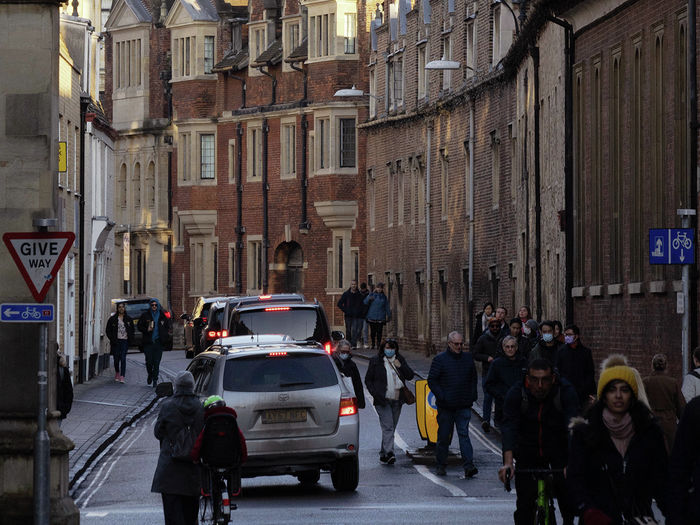Rooney-mania: the voice of a generation
Arts Columnist Emily Moss takes a critical look at the precipitous rise of Sally Rooney

Sally Rooney: even if you haven’t read a single book over the last two years, you’ll still most likely still have heard the name, now almost as ubiquitous in 2020s pop culture as the now disgraced J.K Rowling’s name was in the late 90s. The 31-year-old Irish author experienced a meteoric rise to fame during the 2020 COVID lockdown when the TV adaptation of her second novel, Normal People, became a streaming service sensation over a few short weeks.
Suddenly, her novels seemed to become all anyone could talk about, beginning what some have described as “Rooney-mania”– a pop culture obsession with her work (or the footballer Wayne Rooney, if you Google it) – which showed few signs of slowing down as time went on. In the last six months, with the release of her third novel, Beautiful World Where Are You, as well as the TV adaptation of her debut novel, Conversations with Friends, all in the space of six months, Rooney-mania seems to have reached new heights again, which begs the question – what exactly is it about Sally Rooney’s novels and their characters that have such an enduring appeal in contemporary pop culture?
Although Rooney-mania does seem to be the Anglophone literary canon’s favourite obsession at the moment, her novels are not without their critics, who typically criticise Rooney’s characters as being more or less identical. And it’s not exactly hard to disprove: you only have to read all three of Rooney’s published novels to notice a pattern emerging in terms of the demographic she writes about. It is a distinct (and some would say narrow) demographic: there is always a female protagonist, and she is a white, brunette, thin, bi- or heterosexual, Irish, lower middle-class, Marxist, Trinity College Dublin student or alumna, and inclined towards literature, poor communication, low self-esteem and emotionally unavailability.
“Rooney is a writer who has bottled up the zeitgeist of our own time”
The extent to which the “Rooney woman”, as we might describe her, and her experiences match Rooney’s own background has been subject to much debate, although this is something Rooney herself is (rightfully) keen to avoid, and won’t be discussed here. Nevertheless, the undeniable homogeneity of the characters who appear in Rooney’s novels, and the quite “niche” nature of these characters, does beg the question of how her work – and especially its characters – have become so resoundingly popular with readers from so many different demographics that she has been labelled the “voice of a generation”.
Perhaps it’s worth mentioning that the appeal of Rooney’s characters lies not in readers’ ability to relate to them on a more superficial level – few people, after all, fit the bill of the characters’ physical attributes and socioeconomic backgrounds – but more broadly to what’s going on inside their heads. Rooney’s naturalistic style and apparent aversion to adhering to generic tropes in favour of offering solutions that feel authentic – no matter how messy this makes them for her characters – take the unresolved conflicts at the endings of all of her novels, for example- gives us plots and people that more accurately reflect our own lives. It’s exactly this that usually draws a reader to a character, irrespective of whether they might otherwise relate to them. Perhaps it goes without saying, but it’s why the likes of Shakespeare and Dickens remain so widely read today: their characters manage to so effectively encapsulate the human spirit, and what so many like to describe as the “zeitgeist” of the times they were living through.
“As trite as the saying has become, art does imitate life”
Rooney, too, is therefore often described as a writer who has bottled up the zeitgeist of our own time and let it spill out onto the pages – especially for her Millennial and Gen Z readers with whom her work seems to resonate the most, as expected, given that Rooney belongs to this age-group too. That’s not to say that mental health issues, low self-esteem and emotional unavailability are anything new, or a Gen Z- and Millennial-specific issue; it’s more that these generations seem to possess a greater awareness of it than their predecessor, armed with the power of social media and a series of global crises (climate change, COVID etc.) that mean that it’s become more socially acceptable than ever before to depict these problems in popular culture, and Sally Rooney appears to be at the literary forefront of it all, with her messy novels about messy people, who are only really as “messy” as we are.
Perhaps it’s literature’s greatest superpower – showing us that we’re not alone – which is ultimately responsible for Rooney-mania and the popularity of her undeniably homogenous characters. Yes, on the surface, not many of us would have much in common with Marianne, Frances, Eileen or Alice. Yet, as Rooney immerses us in their psyches, it’s somehow comforting to discover characters who often remind us of both ourselves and of people we know in our lives, and to see them struggle as we do, and not always necessarily overcome these struggles in a particularly satisfactory way. After all, as trite as the saying has become, art does imitate life, and in the example of Sally Rooney and her legion of devotees, there’s a real hunger for it – a hunger that she’s tapped into, so that at least for the next few years, the so-called “cult of Sally Rooney” is only sure to gain even more followers.
 News / Uni offers students £55k in payouts31 October 2025
News / Uni offers students £55k in payouts31 October 2025 News / Uni error forces deeper spending cuts31 October 2025
News / Uni error forces deeper spending cuts31 October 2025 News / Students launch women’s society excluding trans women31 October 2025
News / Students launch women’s society excluding trans women31 October 2025 News / Students allowed to use AI, says new uni guidance31 October 2025
News / Students allowed to use AI, says new uni guidance31 October 2025 News / College rowing captains narrowly vote to exclude trans women31 October 2025
News / College rowing captains narrowly vote to exclude trans women31 October 2025










